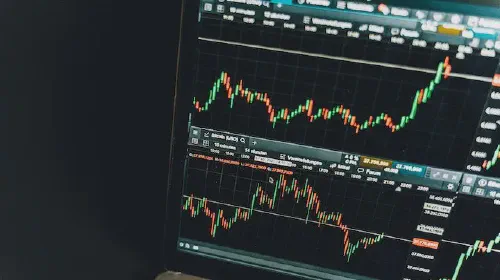Edge Computing vs. Cloud Computing: Understanding the Contrasts
Salomon Kisters
Jul 11, 2023This post may contain affiliate links. If you use these links to buy something we may earn a commission. Thanks!
In today’s digital age, technology has revolutionized the way businesses operate and individuals interact. With the increasing demand for efficient data processing and storage, cloud computing emerged as a game-changer.
However, recent advancements have given rise to a new computing paradigm known as edge computing. You may have come across these terms before, but do you truly understand the differences between them?
In this blog post, we will delve into the depths of edge computing and cloud computing to help you distinguish between the two and make informed decisions for your business.
The Basics of Edge Computing
To begin, let’s define what edge computing is all about. Edge computing is a distributed computing infrastructure that brings data storage and processing closer to the edge of the network, where the data is generated.
Instead of relying solely on centralized cloud servers, edge computing leverages intermediary devices, such as routers, gateways, and edge servers, to perform computations in proximity to the data source. This strategic placement of resources helps reduce latency, enhance scalability, and improve overall system performance.
Understanding Cloud Computing
On the other hand, cloud computing refers to the delivery of computing services over the internet. With cloud computing, companies can access a variety of resources and services, including storage, databases, software, networking, and analytics, on-demand, without the need for owning or managing physical infrastructure.
The cloud provides a centralized environment where data is processed and stored in a network of remote servers. This allows businesses to achieve flexibility, scalability, and cost-efficiency by leveraging the shared resources and economies of scale offered by cloud service providers.
Edge Computing vs. Cloud Computing
One of the key distinctions between edge computing and cloud computing lies in their geographical placement of resources and data processing. Cloud computing relies on remote data centers that are typically located far away from end users.
These data centers are designed to handle massive workloads from multiple clients, offering high-bandwidth connectivity and a vast pool of computing resources. In contrast, edge computing brings the computing closer to the data source, minimizing the distance data must travel, and reducing latency.
Latency and Real-Time Decision Making
Latency, the delay between a request and response, has a significant impact on the performance of real-time applications and services. Cloud computing, due to the centralized nature of data processing, relies on data transportation over long distances, which can introduce latency. In some cases, this delay can be detrimental, especially when dealing with time-sensitive applications such as autonomous vehicles, smart grids, or remote medical procedures.
Edge computing, on the other hand, resolves this issue by processing data locally, at or near the point of generation. This proximity eliminates the latency associated with sending data to the cloud and waiting for a response. Real-time decision making becomes possible, as edge devices can analyze and act upon the data instantaneously. This is particularly useful for applications that require immediate responses, such as industrial automation, video streaming, or IoT devices.
Bandwidth and Network Reliability
When it comes to bandwidth and network reliability, edge computing takes a different approach compared to cloud computing. Cloud computing relies on a high-bandwidth connection to transfer data back and forth between the end-user device and the remote data center. This dependency on network connectivity can pose challenges in situations where internet connectivity is limited or unreliable. Additionally, the continuous need for data transfer can result in increased costs, especially for bandwidth-intensive applications.
Edge computing, on the other hand, reduces the reliance on network connectivity as much of the processing and storage occurs locally. This local processing minimizes the amount of data that needs to be transmitted over the network and reduces the strain on bandwidth. Consequently, edge computing is well-suited for applications that operate in remote areas, as well as those that demand low latency and high network reliability, such as autonomous drones or mission-critical industrial systems.
Scalability and Flexibility
Scalability is a crucial factor for businesses, as it determines the ability to handle increasing workloads and adapt to changing demands. Cloud computing offers immense scalability due to its centralized nature. Cloud service providers maintain vast data centers with a significant amount of resources, allowing businesses to easily scale up or down as needed. This flexibility empowers companies with the ability to respond quickly to market changes and handle unexpected spikes in traffic.
Edge computing, on the other hand, provides a different level of scalability. With edge computing, businesses can distribute computing resources across various locations, allowing for greater capacity and the ability to handle localized workloads. This decentralized approach ensures that data processing and storage are optimized for specific regions or users, providing improved performance and reducing the burden on the cloud infrastructure. It is worth noting, however, that the scalability of edge computing may be limited by the capacity of individual edge devices and their computing capabilities.
Security and Privacy Concerns
Security and privacy are paramount in today’s digital landscape. Cloud computing introduces concerns regarding data privacy and security, as data is stored and processed on remote servers owned by cloud service providers. This raises questions about data ownership, access control, and protection against potential breaches or unauthorized access. While cloud service providers employ various security measures, organizations must trust these providers with their sensitive data.
Edge computing offers potential advantages in terms of security and privacy. Because data is processed locally, it can remain within the organization’s control and reduce the potential exposure to external risks. This approach can be particularly beneficial in industries where data confidentiality is critical, such as healthcare or finance. However, it is important to note that securing numerous edge devices distributed across different locations can pose its own set of challenges, requiring robust security measures at each edge point to ensure data integrity and protection against potential attacks.
Conclusion
In conclusion, edge computing and cloud computing are two distinct approaches to data processing and storage, each with its own advantages and limitations.
While cloud computing offers scalability, flexibility, and centralized resource management, edge computing delivers lower latency, real-time decision-making capabilities, and enhanced security and privacy. The choice between these two paradigms ultimately depends on the specific requirements of your business and the nature of the applications you aim to deploy.
As technology continues to evolve, combining edge computing with cloud computing, known as a hybrid approach, may offer the best of both worlds, providing a balance between local processing and centralized management.
To stay ahead in this ever-changing landscape, it is crucial to evaluate your needs and choose the most suitable solution that aligns with your business goal
Stay informed with the latest insights in Crypto, Blockchain, and Cyber-Security! Subscribe to our newsletter now to receive exclusive updates, expert analyses, and current developments directly to your inbox. Don't miss the opportunity to expand your knowledge and stay up-to-date.
Love what you're reading? Subscribe for top stories in Crypto, Blockchain, and Cyber-Security. Stay informed with exclusive updates.
Please note that the Content may have been generated with the Help of AI. The editorial content of OriginStamp AG does not constitute a recommendation for investment or purchase advice. In principle, an investment can also lead to a total loss. Therefore, please seek advice before making an investment decision.

The Future of Forex Trading with Blockchain Adoption | Impact & Benefits
Discover the impact of blockchain adoption on the future of forex trading and the benefits it brings to traders, including transparency, security, and efficiency.

Deepfake Technology - A New Cybersecurity Threat?
Discover the potential dangers of deepfake technology and how it may pose a risk to cybersecurity. Learn more about the implications and ways to mitigate the threat.

The Ethical Debate: Humans vs. AI
Engage in the ethical debate surrounding humans and AI, exploring the fascinating impact and implications of this evolving relationship.
Protect your documents
Your gateway to unforgeable data. Imprint the authenticity of your information with our blockchain timestamp